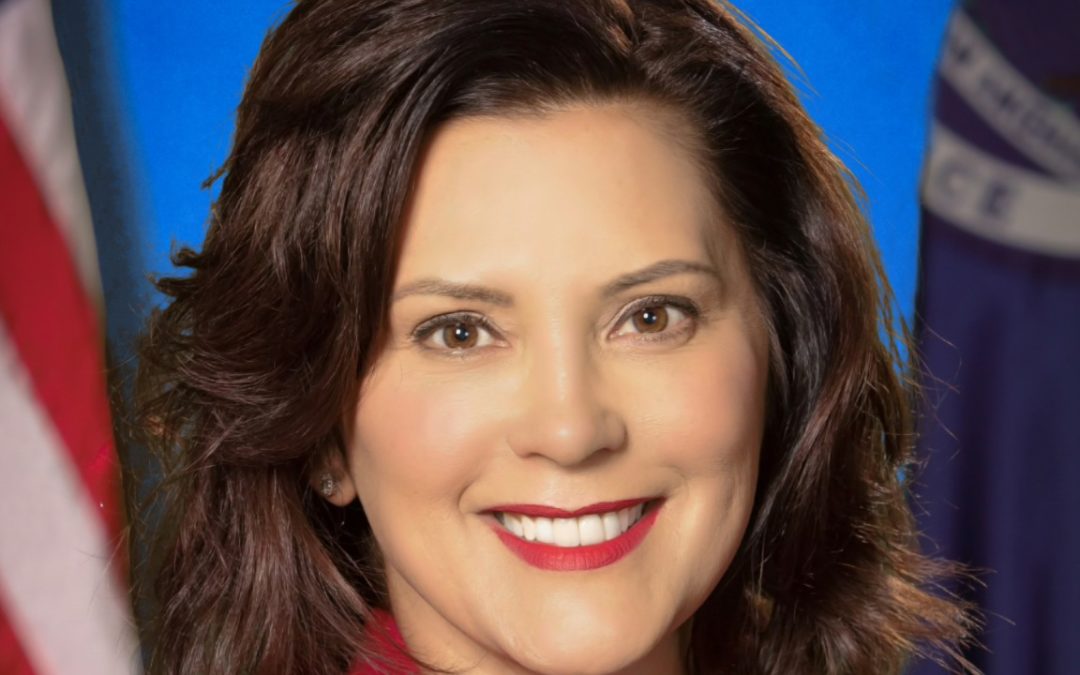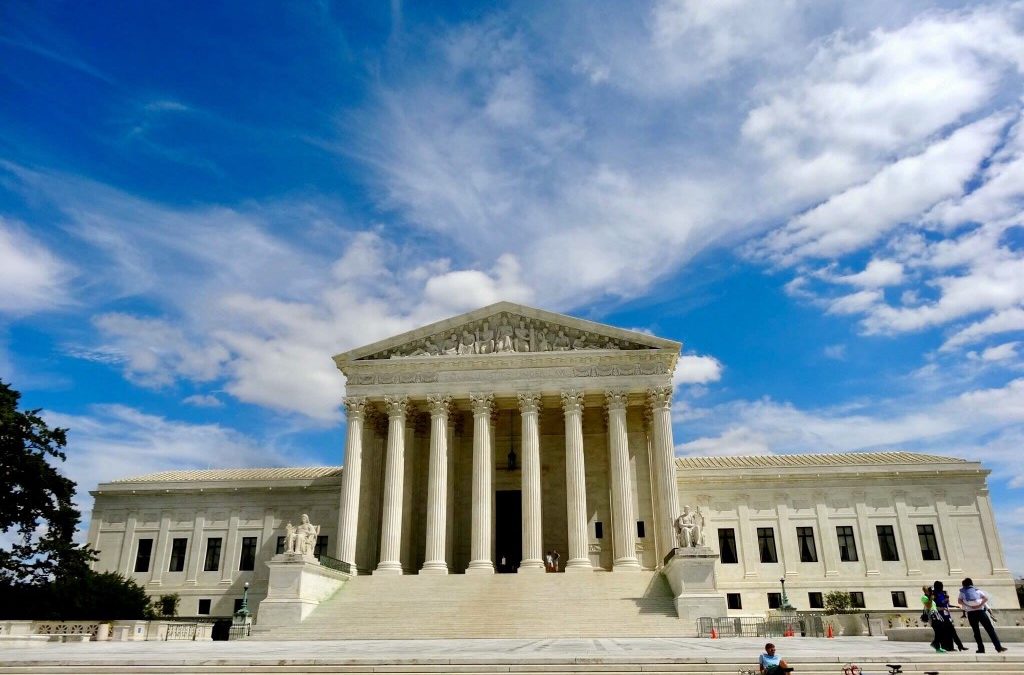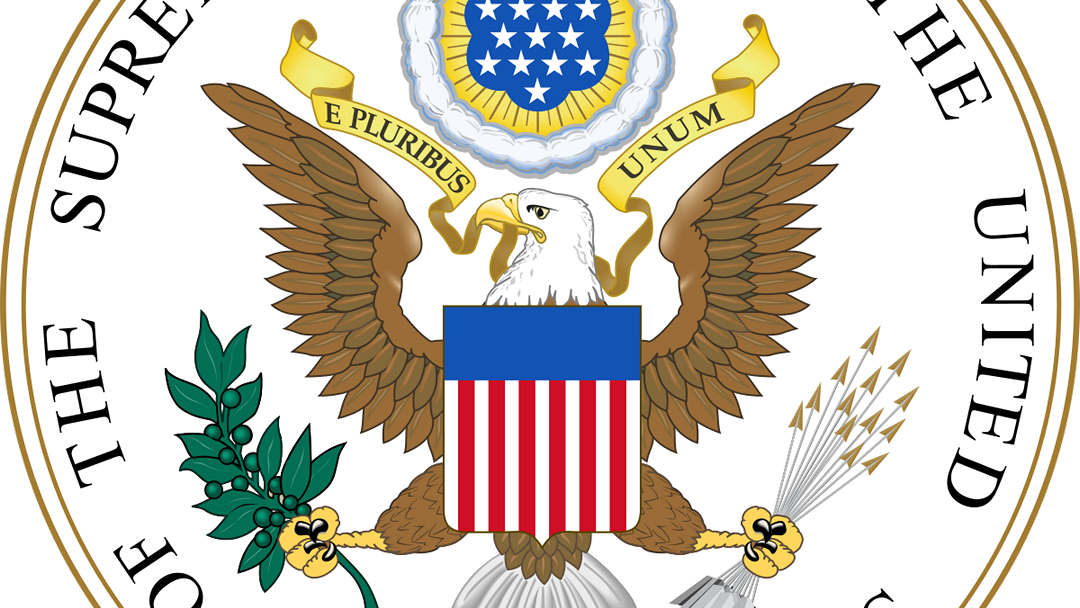
Executive Order 2020-70 (COVID-19)
Michigan Executive Order 2020-70 (COVID-19)
EXECUTIVE ORDER
No. 2020-70
Temporary requirement to suspend activities that
are not necessary to sustain or protect life
Rescission of Executive Order 2020-59
The novel coronavirus (COVID-19) is a respiratory disease that can result in serious illness or death. It is caused by a new strain of coronavirus not previously identified in humans and easily spread from person to person. There is currently no approved vaccine or antiviral treatment for this disease.
On March 10, 2020, the Department of Health and Human Services identified the first two presumptive-positive cases of COVID-19 in Michigan. On that same day, I issued Executive Order 2020-4. This order declared a state of emergency across the state of Michigan under section 1 of article 5 of the Michigan Constitution of 1963, the Emergency Management Act, 1976 PA 390, as amended, MCL 30.401 et seq., and the Emergency Powers of the Governor Act of 1945, 1945 PA 302, as amended, MCL 10.31 et seq.
In the weeks that followed, the virus spread across Michigan, bringing deaths in the thousands, confirmed cases in the tens of thousands, and deep disruption to this state’s economy, homes, and educational, civic, social, and religious institutions. On April 1, 2020, in response to the widespread and severe health, economic, and social harms posed by the COVID-19 pandemic, I issued Executive Order 2020-33. This order expanded on Executive Order 2020-4 and declared both a state of emergency and a state of disaster across the State of Michigan under section 1 of article 5 of the Michigan Constitution of 1963, the Emergency Management Act, and the Emergency Powers of the Governor Act of 1945. And on April 30, 2020, finding that COVID-19 had created emergency and disaster conditions across the State of Michigan, I issued Executive Order 2020-67 to continue the emergency declaration under the Emergency Powers of the Governor Act, as well as Executive Order 2020-68 to issue new emergency and disaster declarations under the Emergency Management Act.
The Emergency Management Act vests the governor with broad powers and duties to “cop[e] with dangers to this state or the people of this state presented by a disaster or emergency,” which the governor may implement through “executive orders, proclamations, and directives having the force and effect of law.” MCL 30.403(1)-(2). Similarly, the Emergency Powers of the Governor Act of 1945 provides that, after declaring a state of emergency, “the governor may promulgate reasonable orders, rules, and regulations as he or she considers necessary to protect life and property or to bring the emergency situation within the affected area under control.” MCL 10.31(1).
To suppress the spread of COVID-19, to prevent the state’s health care system from being overwhelmed, to allow time for the production of critical test kits, ventilators, and personal protective equipment, to establish the public health infrastructure necessary to contain the spread of infection, and to avoid needless deaths, it is reasonable and necessary to direct residents to remain at home or in their place of residence to the maximum extent feasible. To that end, on March 23, 2020, I issued Executive Order 2020-21, ordering all people in Michigan to stay home and stay safe. In Executive Orders 2020-42 and 2020-59, I extended that initial order, modifying its scope as needed and appropriate to match the ever-changing circumstances presented by this pandemic.
The measures put in place by Executive Orders 2020-21, 2020-42, and 2020-59 have been effective: the number of new confirmed cases each day has started to drop. Although the virus remains aggressive and persistent—on April 30, 2020, Michigan reported 41,379 confirmed cases and 3,789 deaths—the strain on our health care system has begun to relent, even as our testing capacity has increased. We can now start the process of gradually resuming in-person work and activities that were temporarily suspended under my prior orders. In so doing, however, we must move with care, patience, and vigilance, recognizing the grave harm that this virus continues to inflict on our state and how quickly our progress in suppressing it can be undone.
Accordingly, with this order, I find it reasonable and necessary to reaffirm the measures set forth in Executive Order 2020-59 and amend their scope. With Executive Order 2020-59, I ordered that certain previously suspended work and activities could resume, based on an evaluation of public health metrics and an assessment of the statewide risks and benefits. That evaluation remains ongoing, and based upon it, I find that we will soon be positioned to allow another segment of previously suspended work to resume. This work is permitted to resume on May 7, 2020, and includes construction, real-estate activities, and work that is traditionally and primarily performed outdoors. This work, like the resumed activities allowed under Executive Order 2020-59, will be subject to stringent precautionary measures. This partial and incremental reopening will allow my public health team to evaluate the effects of allowing these activities to resume, to assess the capacity of the health care system to respond adequately to any increases in infections, and to prepare for any increase in patients presenting to a health-care facility or provider. With this order, Executive Order 2020-59 is rescinded. This order will remain in effect until May 15, 2020.
Acting under the Michigan Constitution of 1963 and Michigan law, I order the following:
- This order must be construed broadly to prohibit in-person work that is not necessary to sustain or protect life.
- Subject to the exceptions in section 7 of this order, all individuals currently living within the State of Michigan are ordered to stay at home or at their place of residence. Subject to the same exceptions, all public and private gatherings of any number of people occurring among persons not part of a single household are prohibited.
- All individuals who leave their home or place of residence must adhere to social distancing measures recommended by the Centers for Disease Control and Prevention (“CDC”), including remaining at least six feet from people from outside the individual’s household to the extent feasible under the circumstances.
- No person or entity shall operate a business or conduct operations that require workers to leave their homes or places of residence except to the extent that those workers are necessary to sustain or protect life, to conduct minimum basic operations, or to perform a resumed activity within the meaning of this order.
- For purposes of this order, workers who are necessary to sustain or protect life are defined as “critical infrastructure workers,” as described in sections 8 and 9 of this order.
- For purposes of this order, workers who are necessary to conduct minimum basic operations are those whose in-person presence is strictly necessary to allow the business or operation to maintain the value of inventory and equipment, care for animals, ensure security, process transactions (including payroll and employee benefits), or facilitate the ability of other workers to work remotely.
Businesses and operations must determine which of their workers are necessary to conduct minimum basic operations and inform such workers of that designation. Businesses and operations must make such designations in writing, whether by electronic message, public website, or other appropriate means. Workers need not carry copies of their designations when they leave the home or place of residence for work.
Any in-person work necessary to conduct minimum basic operations must be performed consistently with the social distancing practices and other mitigation measures described in section 11 of this order.
- Workers who perform resumed activities are defined in section 10 of this order.
- Businesses and operations that employ critical infrastructure workers or workers who perform resumed activities may continue in-person operations, subject to the following conditions:
- Consistent with sections 8, 9, and 10 of this order, businesses and operations must determine which of their workers are critical infrastructure workers or workers who perform resumed activities and inform such workers of that designation. Businesses and operations must make such designations in writing, whether by electronic message, public website, or other appropriate means. Workers need not carry copies of their designations when they leave the home or place of residence for work. Businesses and operations need not designate:
- Workers in health care and public health.
- Workers who perform necessary government activities, as described in section 6 of this order.
- Workers and volunteers described in section 9(d) of this order.
- In-person activities that are not necessary to sustain or protect life or to perform a resumed activity must be suspended.
- Businesses and operations maintaining in-person activities must adopt social distancing practices and other mitigation measures to protect workers and patrons, as described in section 11 of this order. Stores that are open for in-person sales must also adhere to the rules described in section 12 of this order.
- Any business or operation that employs workers who perform resumed activities under section 10(a) of this order, but that does not sell necessary supplies, may sell any goods through remote sales via delivery or at the curbside. Such a business or operation, however, must otherwise remain closed to the public.
- Consistent with sections 8, 9, and 10 of this order, businesses and operations must determine which of their workers are critical infrastructure workers or workers who perform resumed activities and inform such workers of that designation. Businesses and operations must make such designations in writing, whether by electronic message, public website, or other appropriate means. Workers need not carry copies of their designations when they leave the home or place of residence for work. Businesses and operations need not designate:
- All in-person government activities at whatever level (state, county, or local) are suspended unless:
- They are performed by critical infrastructure workers, including workers in law enforcement, public safety, and first responders, as defined in sections 8 and 9 of this order.
- They are performed by workers who are permitted to resume work under section 10 of this order.
- They are necessary to support the activities of workers described in sections 8, 9, and 10 of this order, or to enable transactions that support businesses or operations that employ such workers.
- They involve public transit, trash pick-up and disposal (including recycling and composting), the management and oversight of elections, and the maintenance of safe and sanitary public parks so as to allow for outdoor activity permitted under this order.
- For purposes of this order, necessary government activities include minimum basic operations, as described in section 4(b) of this order. Workers performing such activities need not be designated.
- Any in-person government activities must be performed consistently with the social distancing practices and other mitigation measures to protect workers and patrons described in section 11 of this order.
- Exceptions.
- Individuals may leave their home or place of residence, and travel as necessary:
- To engage in outdoor recreational activity, consistent with remaining at least six feet from people from outside the individual’s household. Outdoor recreational activity includes walking, hiking, running, cycling, boating, golfing, or other similar activity, as well as any comparable activity for those with limited mobility.
- To perform their jobs as critical infrastructure workers after being so designated by their employers. (Critical infrastructure workers who need not be designated under section 5(a) of this order may leave their home for work without being designated.)
- To conduct minimum basic operations, as described in section 4(b) of this order, after being designated to perform such work by their employers.
- To perform resumed activities, as described in section 10 of this order, after being designated to perform such work by their employers.
- To perform necessary government activities, as described in section 6 of this order.
- To perform tasks that are necessary to their health and safety, or to the health and safety of their family or household members (including pets). Individuals may, for example, leave the home or place of residence to secure medication or to seek medical or dental care that is necessary to address a medical emergency or to preserve the health and safety of a household or family member (including in-person procedures or veterinary services that, in accordance with a duly implemented non-essential procedure or veterinary services postponement plan, have not been postponed).
- To obtain necessary services or supplies for themselves, their family or household members, their pets, and their motor vehicles.
- Individuals must secure such services or supplies via delivery to the maximum extent possible. As needed, however, individuals may leave the home or place of residence to purchase groceries, take-out food, gasoline, needed medical supplies, and any other products necessary to maintain the safety, sanitation, and basic operation of their residences or motor vehicles.
- Individuals may also leave the home to pick up or return a motor vehicle as permitted under section 9(i) of this order, or to have a motor vehicle or bicycle repaired or maintained.
- Individuals should limit, to the maximum extent that is safe and feasible, the number of household members who leave the home for any errands.
- To pick up non-necessary supplies at the curbside from a store that must otherwise remain closed to the public.
- To care for a family member or a family member’s pet in another household.
- To care for minors, dependents, the elderly, persons with disabilities, or other vulnerable persons.
- To visit an individual under the care of a health care facility, residential care facility, or congregate care facility, to the extent otherwise permitted.
- To visit a child in out-of-home care, or to facilitate a visit between a parent and a child in out-of-home care, when there is agreement between the child placing agency, the parent, and the caregiver about a safe visitation plan, or when, failing such agreement, the individual secures an exception from the executive director of the Children’s Services Agency.
- To attend legal proceedings or hearings for essential or emergency purposes as ordered by a court.
- To work or volunteer for businesses or operations (including both religious and secular nonprofit organizations) that provide food, shelter, and other necessities of life for economically disadvantaged or otherwise needy individuals, individuals who need assistance as a result of this emergency, and people with disabilities.
- To attend a funeral, provided that no more than 10 people are in attendance.
- To attend a meeting of an addiction recovery mutual aid society, provided that no more than 10 people are in attendance.
- To view a real-estate listing by appointment, as permitted under section 10(h) of this order.
- Individuals may also travel:
- To return to a home or place of residence from outside this state.
- To leave this state for a home or residence elsewhere.
- Between two residences in this state, including moving to a new residence.
- As required by law enforcement or a court order, including the transportation of children pursuant to a custody agreement.
- All other travel is prohibited, including all travel to vacation rentals.
- Individuals may leave their home or place of residence, and travel as necessary:
- For purposes of this order, critical infrastructure workers are those workers described by the Director of the U.S. Cybersecurity and Infrastructure Security Agency in his guidance of March 19, 2020 on the COVID-19 response (available here). This order does not adopt any subsequent guidance document released by this same agency.
Consistent with the March 19, 2020 guidance document, critical infrastructure workers include some workers in each of the following sectors:
- Health care and public health.
- Law enforcement, public safety, and first responders.
- Food and agriculture.
- Energy.
- Water and wastewater.
- Transportation and logistics.
- Public works.
- Communications and information technology, including news media.
- Other community-based government operations and essential functions.
- Critical manufacturing.
- Hazardous materials.
- Financial services.
- Chemical supply chains and safety.
- Defense industrial base.
- For purposes of this order, critical infrastructure workers also include:
- Child care workers (including workers at disaster relief child care centers), but only to the extent necessary to serve the children or dependents of critical infrastructure workers, workers who conduct minimum basic operations, workers who perform necessary government activities, or workers who perform resumed activities. This category includes individuals (whether licensed or not) who have arranged to care for the children or dependents of such workers.
- Workers at suppliers, distribution centers, or service providers, as described below.
- Any suppliers, distribution centers, or service providers whose continued operation is necessary to enable, support, or facilitate another business’s or operation’s critical infrastructure work may designate their workers as critical infrastructure workers, provided that only those workers whose in-person presence is necessary to enable, support, or facilitate such work may be so designated.
- Any suppliers, distribution centers, or service providers whose continued operation is necessary to enable, support, or facilitate the necessary work of suppliers, distribution centers, or service providers described in subprovision (1) of this subsection may designate their workers as critical infrastructure workers, provided that only those workers whose in-person presence is necessary to enable, support, or facilitate such work may be so designated.
- Consistent with the scope of work permitted under subprovision (2) of this subsection, any suppliers, distribution centers, or service providers further down the supply chain whose continued operation is necessary to enable, support, or facilitate the necessary work of other suppliers, distribution centers, or service providers may likewise designate their workers as critical infrastructure workers, provided that only those workers whose in-person presence is necessary to enable, support, or facilitate such work may be so designated.
- Suppliers, distribution centers, and service providers that abuse their designation authority under this subsection shall be subject to sanctions to the fullest extent of the law.
- Workers in the insurance industry, but only to the extent that their work cannot be done by telephone or remotely.
- Workers and volunteers for businesses or operations (including both religious and secular nonprofit organizations) that provide food, shelter, and other necessities of life for economically disadvantaged or otherwise needy individuals, individuals who need assistance as a result of this emergency, and people with disabilities.
- Workers who perform critical labor union functions, including those who administer health and welfare funds and those who monitor the well-being and safety of union members who are critical infrastructure workers, provided that any administration or monitoring should be done by telephone or remotely where possible.
- Workers at retail stores who sell groceries, medical supplies, and products necessary to maintain the safety, sanitation, and basic operation of residences or motor vehicles, including convenience stores, pet supply stores, auto supplies and repair stores, hardware and home maintenance stores, and home appliance retailers.
- Workers at laundromats, coin laundries, and dry cleaners.
- Workers at hotels and motels, provided that the hotels or motels do not offer additional in-house amenities such as gyms, pools, spas, dining, entertainment facilities, meeting rooms, or like facilities.
- Workers at motor vehicle dealerships who are necessary to facilitate remote and electronic sales or leases, or to deliver motor vehicles to customers, provided that showrooms remain closed to in-person traffic.
- For purposes of this order, workers who perform resumed activities are defined as follows:
- Workers who process or fulfill remote orders for goods for delivery or curbside pick-up.
- Workers who perform bicycle maintenance or repair.
- Workers for garden stores, nurseries, and lawn care, pest control, and landscaping operations, subject to the enhanced social-distancing rules described in section 11(h) of this order.
- Maintenance workers and groundskeepers who are necessary to maintain the safety and sanitation of places of outdoor recreation not otherwise closed under Executive Order 2020-69 or any order that may follow from it, provided that the places and their workers do not provide goods, equipment, supplies, or services to individuals, and subject to the enhanced social-distancing rules described in section 11(h) of this order.
- Workers for moving or storage operations, subject to the enhanced social-distancing rules described in section 11(h) of this order.
- Effective at 12:01 am on May 7, 2020, and subject to the enhanced social-distancing rules described in section 11(h) of this order, workers who perform work that is traditionally and primarily performed outdoors, including but not limited to forestry workers, outdoor power equipment technicians, parking enforcement workers, and similar workers.
- Effective at 12:01 am on May 7, 2020, workers in the construction industry, including workers in the building trades (plumbers, electricians, HVAC technicians, and similar workers), subject to the enhanced social-distancing rules described in section 11(i) of this order.
- Effective at 12:01 am on May 7, 2020, workers in the real-estate industry, including agents, appraisers, brokers, inspectors, surveyors, and registers of deeds, provided that:
- Any showings, inspections, appraisals, photography or videography, or final walk-throughs must be performed by appointment and must be limited to no more than four people on the premises at any one time. No in-person open houses are permitted.
- Private showings may only be arranged for owner-occupied homes, vacant homes, vacant land, commercial property, and industrial property.
- Effective at 12:01 am on May 7, 2020, workers necessary to the manufacture of goods that support workplace modification to forestall the spread of COVID-19 infections.
- Businesses, operations, and government agencies that remain open for in-person work must, at a minimum:
- Develop a COVID-19 preparedness and response plan, consistent with recommendations in Guidance on Preparing Workplaces for COVID-19, developed by the Occupational Health and Safety Administration and available here. Such plan must be available at company headquarters or the worksite.
- Restrict the number of workers present on premises to no more than is strictly necessary to perform the in-person work permitted under this order.
- Promote remote work to the fullest extent possible.
- Keep workers and patrons who are on premises at least six feet from one another to the maximum extent possible.
- Increase standards of facility cleaning and disinfection to limit worker and patron exposure to COVID-19, as well as adopting protocols to clean and disinfect in the event of a positive COVID-19 case in the workplace.
- Adopt policies to prevent workers from entering the premises if they display respiratory symptoms or have had contact with a person with a confirmed diagnosis of COVID-19.
- Adopt any other social distancing practices and mitigation measures recommended by the CDC.
- Businesses or operations whose in-person work is permitted under sections 10(c) through 10(f) of this order must also:
- Prohibit gatherings of any size in which people cannot maintain six feet of distance from one another.
- Limit in-person interaction with clients and patrons to the maximum extent possible, and barring any such interaction in which people cannot maintain six feet of distance from one another.
- Provide personal protective equipment such as gloves, goggles, face shields, and face masks as appropriate for the activity being performed.
- Adopt protocols to limit the sharing of tools and equipment to the maximum extent possible and to ensure frequent and thorough cleaning of tools, equipment, and frequently touched surfaces.
- Businesses or operations in the construction industry must also:
- Adhere to all of the provisions in subsection (h) of this section.
- Designate a site-specific supervisor to monitor and oversee the implementation of COVID-19 control strategies developed under subsection (a) of this section. The supervisor must remain on-site at all times during activities. An on-site worker may be designated to perform the supervisory role.
- Conduct a daily entry screening protocol for workers and visitors entering the worksite, including a questionnaire covering symptoms and exposure to people with possible COVID-19, together with, if possible, a temperature screening.
- Create dedicated entry point(s) at every worksite, if possible, for daily screening as provided in subprovision (3) of this subsection, or in the alternative issue stickers or other indicators to workers to show that they received a screening before entering the worksite that day.
- Require face shields or masks to be worn when workers cannot consistently maintain six feet of separation from other workers.
- Provide instructions for the distribution of personal protective equipment and designate on-site locations for soiled masks.
- Encourage or require the use of work gloves, as appropriate, to prevent skin contact with contaminated surfaces.
- Identify choke points and high-risk areas where workers must stand near one another (such as hallways, hoists and elevators, break areas, water stations, and buses) and control their access and use (including through physical barriers) so that social distancing is maintained.
- Ensure there are sufficient hand-washing or hand-sanitizing stations at the worksite to enable easy access by workers.
- Notify contractors (if a subcontractor) or owners (if a contractor) of any confirmed COVID-19 cases among workers at the worksite.
- Restrict unnecessary movement between project sites.
- Create protocols for minimizing personal contact upon delivery of materials to the worksite.
- Any store that remains open for in-store sales under section 9(f) or section 10(c) of this order:
- Must establish lines to regulate entry in accordance with subsection (b) of this section, with markings for patrons to enable them to stand at least six feet apart from one another while waiting. Stores should also explore alternatives to lines, including by allowing customers to wait in their cars for a text message or phone call, to enable social distancing and to accommodate seniors and those with disabilities.
- Must adhere to the following restrictions:
- For stores of less than 50,000 square feet of customer floor space, must limit the number of people in the store (including employees) to 25% of the total occupancy limits established by the State Fire Marshal or a local fire marshal.
- For stores of more than 50,000 square feet, must:
- Limit the number of customers in the store at one time (excluding employees) to 4 people per 1,000 square feet of customer floor space.
- Create at least two hours per week of dedicated shopping time for vulnerable populations, which for purposes of this order are people over 60, pregnant women, and those with chronic conditions like heart disease, diabetes, and lung disease.
- The director of the Department of Health and Human Services is authorized to issue an emergency order varying the capacity limits described in this subsection as necessary to protect the public health.
- May continue to sell goods other than necessary supplies if the sale of such goods is in the ordinary course of business.
- Must consider establishing curbside pick-up to reduce in-store traffic and mitigate outdoor lines.
- No one shall rent a short-term vacation property except as necessary to assist in housing a health care professional aiding in the response to the COVID-19 pandemic or a volunteer who is aiding the same.
- Michigan state parks remain open for day use, subject to any reductions in services and specific closures that, in the judgment of the director of the Department of Natural Resources, are necessary to minimize large gatherings and to prevent the spread of COVID-19.
- Rules governing face coverings.
- Any individual able to medically tolerate a face covering must wear a covering over his or her nose and mouth—such as a homemade mask, scarf, bandana, or handkerchief—when in any enclosed public space.
- All businesses and operations whose workers perform in-person work must, at a minimum, provide non-medical grade face coverings to their workers.
- Supplies of N95 masks and surgical masks should generally be reserved, for now, for health care professionals, first responders (e.g., police officers, fire fighters, paramedics), and other critical workers who interact with the public.
- The protections against discrimination in the Elliott-Larsen Civil Rights Act, 1976 PA 453, as amended, MCL 37.2101 et seq., and any other protections against discrimination in Michigan law, apply in full force to individuals who wear a face covering under this order.
- Nothing in this order should be taken to supersede another executive order or directive that is in effect, except to the extent this order imposes more stringent limitations on in-person work, activities, and interactions. Consistent with prior guidance, neither a place of religious worship nor its owner is subject to penalty under section 20 of this order for allowing religious worship at such place. No individual is subject to penalty under section 20 of this order for violating section 15(a) of this order.
- Nothing in this order should be taken to interfere with or infringe on the powers of the legislative and judicial branches to perform their constitutional duties or exercise their authority.
- This order takes effect immediately, unless otherwise specified in this order, and continues through May 15, 2020 at 11:59 pm. Executive Order 2020-59 is rescinded. All references to that order in other executive orders, agency rules, letters of understanding, or other legal authorities shall be taken to refer to this order.
- I will evaluate the continuing need for this order prior to its expiration. In determining whether to maintain, intensify, or relax its restrictions, I will consider, among other things, (1) data on COVID-19 infections and the disease’s rate of spread; (2) whether sufficient medical personnel, hospital beds, and ventilators exist to meet anticipated medical need; (3) the availability of personal protective equipment for the health care workforce; (4) the state’s capacity to test for COVID-19 cases and isolate infected people; and (5) economic conditions in the state.
- Consistent with MCL 10.33 and MCL 30.405(3), a willful violation of this order is a misdemeanor.
Given under my hand and the Great Seal of the State of Michigan.
Gretchen Whitmer, Governor
Date: May 1, 2020
Time: 2:49 pm



